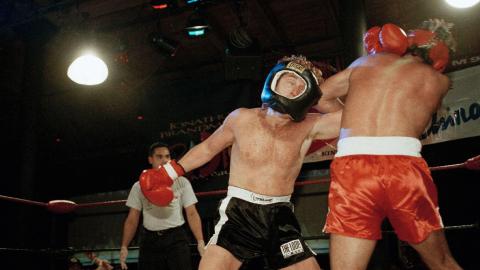Great minds who triumphed in lockdown
‘All of humanity's problems stem from man's inability to sit quietly in a room alone'.
Splendid isolation
Blaise Pascal, the French mathematician, physicist, inventor, theologian and bone fide polymath, once wrote: ‘All of humanity's problems stem from man's inability to sit quietly in a room alone'.
After living through the various lockdowns of the coronavirus outbreak, most people would recoil at the time for more self-reflection but Pascal may have been onto something in his praise of solitude. When we look back at other moments in history, where illness and the threat of contagion, forced people to retreat, we can see the power of sitting quietly at home and the creative potential it can unleash.
Pushkin’s Boldino Autumn
In the autumn of 1830, Russia’s most famous poet, Alexander Pushkin found himself stuck at Boldino. His family’s estate in the southeastern part of the Nizhny Novgorod region. The trip was meant to be a flying one as Pushkin was due to be married in Moscow. However, a cholera outbreak left him stranded in Boldino for three months. ‘There are five quarantine zones between here and Moscow, and I would have to spend fourteen days in each. Do the maths and imagine what a foul mood I am in,’ he wrote in a rather exasperated letter to his fiancée, Natalia Goncharova.
The phrase, Boldino autumn has entered the Russian language to denote a period of productive isolation.
The three months, Pushkin stayed in Boldino proved to be the most productive period in his writing career. Russia’s pre-eminent writer completed his novel Eugene Onegin and short story cycle The Belkin Tales and four verse dramas, Little tragedies and over thirty poems. Like all those in lockdown, Pushkin experimented with a quarantine beard but kept disciplined with a strict routine which he outlined in another letter to his would-be bride.
‘I wake up at seven o’clock, drink coffee and lie till three o’clock. I have been writing a lot recently and have already written a heap of things. At three o’clock I go riding, at five I take a bath and then dine on potatoes and buckwheat porridge. Then I read till nine o'clock.’
The phrase, Boldino autumn has entered the Russian language to denote a period of productive isolation. It is yet to be seen whether a ‘Corona Spring’ will come to have similar connotations in English.
Newton’s 'annus mirabilis'
The Great Plague of 1665 – 1666, as recalled in Samuel Pepys’s diary was the worst outbreak of ‘pestilence’ in Britain since the Black Death of 1347. As well as London, the outbreak reached other British cities, like Cambridge forcing the closure of the world-famous university where a 22-year-old Isaac Newton was studying.
Having to abandon his studies, Newton returned to his family home, Woolsthorpe Manor in Lincolnshire. This period and another spell he spent at Woolsthorpe in the spring of 1667 is known as Newton’s annus mirabilis ‘year of wonders’ where he began work on the many theories that would shape our understanding of the laws of nature.
‘For in those days I was in the prime of my age for invention & minded Mathematics & Philosophy more than at any time since,’ wrote Newton to the French scholar, Pierre des Maizeaux about those fruitful years in Woolsthorpe.
Freed from the obligations of university life, Newton had time to dedicate himself to a period of productive solitary study where he developed theories on calculus, motion and optics and the laws of motion and gravity. It was witnessing an apple fall from a tree in the garden of Woolsthorpe that inspired him to formulate his law of universal gravitation.
Shakespeare and the tragedy of working from home
Shakespeare's life was defined by the Plague. In 1564, three months after his birth, the Stratford-Upon-Avon register records Hic incipit pestis – here begins plague. Four of Shakespeare’s siblings succumbed to the plague as well as his only son Hamnet. He would find his professional life routinely disrupted by outbreaks.
'Thou art a boil, A plague-sore, an embossed carbuncle...'
In a Tudor attempt to ‘flatten the curve’, ‘the 1603 outbreak had brought a directive from the privy council that closed playhouses when more than 30 disease-related deaths were recorded in a week.’ By July 1606, death rates hit that unfortunate threshold, forcing Shakespeare to close his theatre, The Globe.
As an actor, Shakespeare couldn’t work from home but as a playwright and a poet he could get on with some serious writing. During the 1606 outbreak, according to author James Shapiro in his Year of Lear claims Shakespeare wrote three of his most famous tragedies, King Lear, Macbeth and Anthony and Cleopatra. The plague gave Shakespeare the opportunity to write and may well have inspired his writing. You can see how plague weighed heavy on Shakespeare's mind, using it as a terrible insult Lear uses against his daughter Goneril.
See how King Lear insults his daughter, Goneril, and you can see how it weighed on his mind, in the way it is invoked as a terrible insult.
















